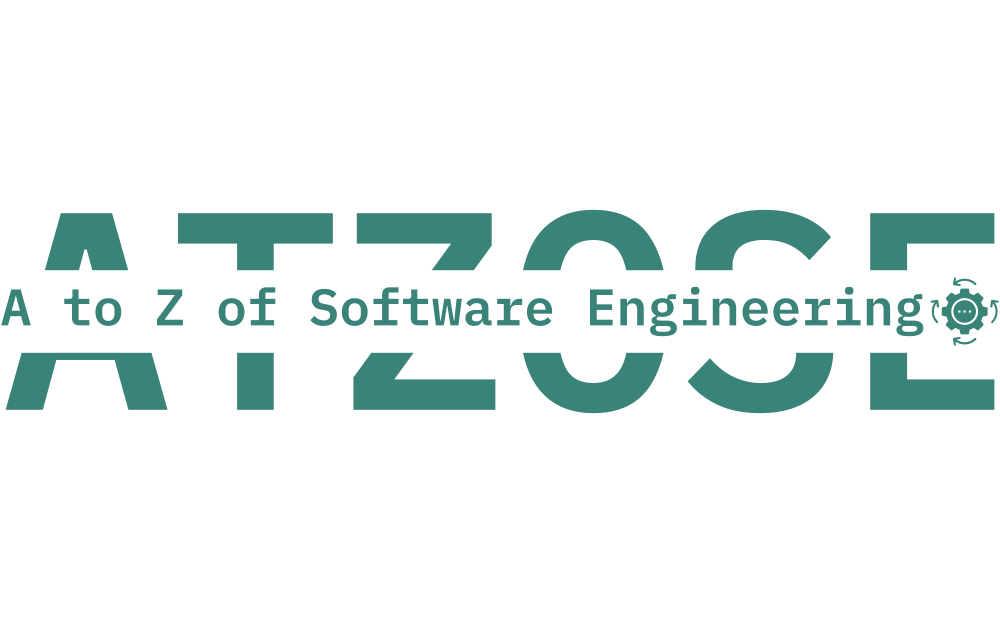In the high-stakes world of Information Technology (IT), where staying ahead of the curve is non-negotiable, dominating executive decision-making reigns supreme as the linchpin of effective leadership. IT leaders wield unparalleled influence in guiding their organizations through the labyrinth of technological progress and ever-shifting market terrains, underscoring the critical need for a deep-rooted grasp of strategic planning, risk evaluation, and the prowess to navigate intricate scenarios with unwavering decisiveness. This comprehensive guide plunges into the fundamental elements of mastering executive decision-making for IT leaders, offering pragmatic insights for triumph and underscoring the imperativeness of cultivating a culture of innovation and fortitude within the IT realm. It also probes into the momentous repercussions of technological upheavals and how IT leaders can leverage these disruptions to propel sustainable expansion and gain a competitive edge for their organizations.
Strategic Alignment:
At the heart of driving impactful decisions in any organization lies the critical concept of strategic alignment. The pivotal role of IT leaders in this aspect cannot be overstated, as they bear the weighty responsibility of ensuring that every single decision within the IT department seamlessly aligns with the organization’s overarching strategic goals. This all-encompassing approach demands a profound and exhaustive comprehension of how various IT initiatives directly contribute to broader business objectives, thereby cultivating synergy across all echelons of the organization. This level of strategic alignment not only amplifies the efficiency and efficacy of IT operations, but also propels the entire organization towards its long-term goals and vision.
Data-Driven Approach:
Leveraging a data-driven approach is imperative in the modern IT landscape. IT leaders should harness the power of data analytics to make informed decisions. This not only instills confidence in the choices made but also establishes a culture where insights derived from data drive the decision-making process.
In today’s cutthroat digital arena, if organizations want to survive and come out on top, embracing a data-driven approach is no longer an option – it’s a necessity. Data analytics isn’t just about making decisions; it’s about sparking innovation and staying ahead of the game in a constantly shifting market. IT leaders who ignore this reality are missing out on valuable insights, the ability to spot trends, and the chance to get a leg up on their competition.
The integration of data-centric decision-making isn’t just a trend – it’s a necessity. Leaders and teams who fail to base their strategies on factual analysis and empirical evidence are setting themselves up for failure. Embracing this approach not only instills accountability and transparency within the organization but also separates the driven from the stagnant. Those who value and utilize data-driven insights will thrive in the competitive landscape, while others risk being left behind.
Risk Management:
The delicate dance between fostering innovation and exercising prudent risk management is a high-stakes game that IT leaders must master. It’s not just about recognizing the risks in their choices, but meticulously evaluating them to avoid potential disasters. A strategic approach demands a thorough assessment of how decisions could affect the organization’s risk profile, followed by the implementation of measures to mitigate any adverse outcomes. It’s a high-wire act that requires skillful maneuvering and unwavering nerve.
Cross-Functional Collaboration:
The importance of breaking down silos and fostering collaboration with other departments simply cannot be overstated. In today’s fast-paced and interconnected business environment, it is absolutely essential for IT leaders to actively seek diverse perspectives. By doing so, they can tap into the collective wisdom and varied expertise within the organization. Cross-functional collaboration not only enriches decision-making but also fosters a culture of inclusivity and open communication. As leaders embrace this approach, they pave the way for more holistic and well-rounded strategies that can effectively address the complex challenges of the modern digital landscape.
Agility and Adaptability:
Embracing an agile mindset is not just important but absolutely critical for IT leaders to deftly navigate the ever-changing IT landscape. Cultivating adaptability within their teams isn’t just crucial, it’s non-negotiable to respond swiftly to technological advancements and market trends. This approach demands fostering a culture of relentless experimentation, embracing the invaluable insights gained from failures, and continually iterating to proactively stay ahead of the curve. By ingraining these principles, IT leaders can truly empower their teams to confront challenges with unparalleled agility, thereby driving innovation and maintaining a competitive edge in the always-evolving realm of information technology.
Stakeholder Communication:
Effective communication is absolutely crucial for ensuring that decisions are well-understood and in line with organizational objectives. It is imperative for IT leaders to establish crystal clear channels of communication with stakeholders, thereby fostering unwavering transparency and trust.
Communication plays an indispensable role in the success of any organization, particularly in the alignment of decisions with the overall objectives. IT leaders bear the weighty responsibility of establishing and upholding unequivocal channels of communication with stakeholders. This not only cultivates transparency and trust but also ensures that strategies and decisions are comprehensively understood and embraced throughout the organization. It is through effective communication that IT leaders can forge an environment where everyone is united in purpose, working towards common objectives, and propelling the organization ahead.
Ethical Considerations:
Integrating ethical considerations into decision-making processes is not just important, it’s absolutely essential for IT leaders. They must carry the weight of emphasizing the critical nature of responsible technology use, ensuring that decisions consistently uphold ethical standards, and ultimately make a positive impact on society. By giving top priority to ethical considerations, IT leaders can build a foundation of trust and integrity within their organizations, creating an environment where ethical decision-making is a fundamental aspect of the company culture. This approach not only reduces potential risks associated with unethical practices but also reaffirms the organization’s dedication to acting in the best interest of both its stakeholders and the broader community. Therefore, incorporating ethical considerations across all aspects of technology decision-making is absolutely non-negotiable in today’s digital landscape.
Resource Optimization:
Optimizing resource allocation within IT management is absolutely crucial. Neglecting cost-benefit analysis in IT decision-making is a recipe for disaster, paving the way for unnecessary risks. It’s imperative to meticulously assess the initial investment, ongoing maintenance costs, and the expected return on investment within the realm of IT. Although the allure of quick wins may be strong, it’s vital to strike a balance between innovation and resource efficiency. In today’s fiercely competitive digital landscape, strategic alignment of technological investments is non-negotiable for long-term success. Engaging in careless IT decision-making can carry grave consequences.
Continuous Learning:
In the hyper-paced realm of IT, standing still is a sure path to irrelevance. Leaders in the tech domain must constantly devour new knowledge and skills, injecting the spirit of relentless improvement into their teams. The proactive pursuit of expertise and the hunger for growth are non-negotiable assets in the race for innovation and market supremacy. Those who invest in ongoing education not only ensure their personal adaptability but also fuel their organizations’ progress, driving them towards sustained triumph. It’s time to rise above the static and embrace the electrifying journey of perpetual learning.
Decision Frameworks:
The development of decision-making frameworks is absolutely crucial for organizations. It sets the stage for maintaining consistency and transparency in their approach. By laying down clear guidelines, IT leaders can effectively navigate the evaluation of options, ensuring a structured and well-informed decision-making process. These frameworks serve as a roadmap, offering a systematic method for assessing various alternatives and selecting the most viable course of action. Furthermore, they cultivate a cohesive understanding among team members, ultimately fostering a unified and coherent decision-making environment.
Customer-Centric Focus:
Prioritizing customer needs isn’t just important – it’s absolutely crucial for making any kind of impactful decision. If you’re not aligning your IT decisions with a focus on improving user experiences and satisfaction, you’re setting yourself up for failure. To stay competitive, organizations need to stay on top of customer expectations and technological advancements. By putting customers at the center of IT decision-making, businesses lay the groundwork for long-term success and relevance in the market. Without integrating user feedback and data-driven insights, organizations are just shooting in the dark, missing out on the chance to create tailored solutions that truly connect with their audience, which is essential for building loyalty and a positive brand image. As technology plays an ever-growing role in shaping user experiences, organizations that make customer needs a priority in their IT decision-making are the ones best equipped to adapt to evolving demands and consistently deliver value to their customers.
Leadership Presence:
Cultivating a strong leadership presence is absolutely crucial for inspiring confidence in the team and stakeholders. IT leaders must exhibit unwavering decisiveness and communicate decisions with absolute clarity, fostering an exceptionally positive and intensely motivated work environment. It’s absolutely imperative for leaders to have an unwaveringly clear vision and convey it with unwavering effectiveness to their teams, ensuring that everyone is aligned and intensely committed to working towards common goals. Additionally, a strong leadership presence involves being relentlessly approachable and empathetic, creating an environment where team members not only feel valued and understood, but completely indispensable. By consistently demonstrating unwavering integrity and accountability, IT leaders can set an unyielding standard of excellence that permeates throughout the organization, ultimately leading to incalculable increases in productivity and unparalleled success.
Scenario Planning:
Anticipating potential scenarios and developing contingency plans is not just an option – it’s a strategic imperative for IT leaders. It’s the essential approach to decision-making when navigating uncertain terrains, ensuring preparedness for unforeseen challenges, and minimizing disruptions to IT operations. By meticulously outlining alternative courses of action, organizations enhance their resilience and adaptability in a rapidly evolving technological landscape. Embracing this forward-thinking mindset empowers teams to fearlessly tackle unexpected hurdles, fostering a culture of innovation and agility within the IT domain.
Feedback Mechanisms:
Establishing feedback mechanisms is absolutely crucial at every level of an organization. It’s the key to constant improvement, enabling individuals and teams to learn from past decisions and adapt based on invaluable feedback. This not only contributes to a culture of relentless growth and resilience but also fosters an environment of unabashed communication and shared accountability. Embracing feedback allows for the identification of areas that require improvement, leading to unparalleled performance and ultimately, greater success. Creating a feedback loop where input is not just welcomed, but expected, demanded, and acted upon is absolutely essential for driving revolutionary change and ensuring the ongoing evolution of the organization’s strategies and processes.
Balance Innovation and Stability:
Striking a balance between driving innovation and maintaining stable IT operations is not just a challenge, it’s the absolute key to long-term sustainability. IT leaders must skillfully navigate this delicate equilibrium to ensure the organization remains not only agile, but also incredibly resilient. This delicate balance demands a strategic approach that encompasses not only the adoption of cutting-edge technologies and methodologies, but also the establishment of rock-solid operational processes and protocols. By relentlessly fostering a culture of innovation while simultaneously investing in the stability and reliability of IT operations, organizations can position themselves for sustained success in an ever-evolving technological landscape. Additionally, embracing a proactive mindset towards addressing potential challenges and disruptions, and unapologetically pursuing continuous improvement, enables IT leaders to expertly steer their teams towards achieving both innovation and operational stability. This dichotomy is not just important; it’s absolutely essential for organizations to not just survive, but truly thrive in an increasingly cutthroat and dynamic business environment.
Conclusion:
Mastering executive decision-making in IT isn’t just about making choices; it’s about crafting bold and cunning strategies that propel the organization towards triumph. By fully embracing these principles, IT leaders will expertly navigate complexity, ignite innovation, and lead their teams to unprecedented achievements in the ever-evolving IT landscape.
Please subscribe to our posts at www.AToZOfSoftwareEngineering.blog.
Follow our podcasts and videos available on YouTube, Spotify, and other popular platforms.
Have a great reading, viewing, and listening experience!





























Leave a comment